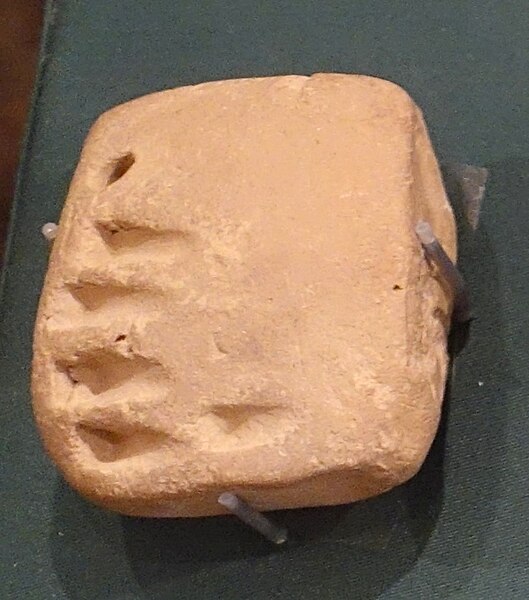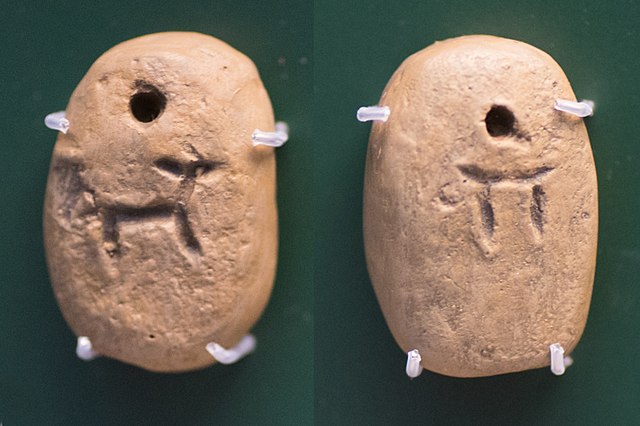The cuneiform i sign is a common use vowel sign. It can be found in many languages, examples being the Akkadian language of the Epic of Gilgamesh and the mid 14th-century BC Amarna letters; also the Hittite language-(see table of Hittite cuneiform signs below).
Amarna letter EA 365-(Reverse), Biridiya to Pharaoh, "Furnishing Corvée Workers"; 7th line: i-na URU-Šunama-ki, "...in (city)-Šunama-(his)". Note: i as part of ia (cuneiform) in 3rd line. ("ia" is best visual; i-na of 7th line has i-(visually deformed/at angle) on the left side (margin) of the clay tablet) (High Resolution exandable photo)
Cylinder seal usage of the i sign (part of ia (cuneiform)) (had to be inscribed in-reverse to appear in clay impression correctly).
Cuneiform is a logo-syllabic writing system that was used to write several languages of the Ancient Near East. The script was in active use from the early Bronze Age until the beginning of the Common Era. Cuneiform scripts are marked by and named for the characteristic wedge-shaped impressions which form their signs. Cuneiform is the earliest known writing system and was originally developed to write the Sumerian language of southern Mesopotamia.
A trilingual cuneiform inscription of Xerxes I at Van Fortress in Turkey, an Achaemenid royal inscription written in Old Persian, Elamite and Babylonian forms of cuneiform
Clay bulla and tokens, 4000–3100 BC, Susa
Numerical tablet, 3500–3350 BC (Uruk V phase), Khafajah
Pre-cuneiform tags, with drawing of goat or sheep and number (probably "10"), Al-Hasakah, 3300–3100 BC, Uruk culture






